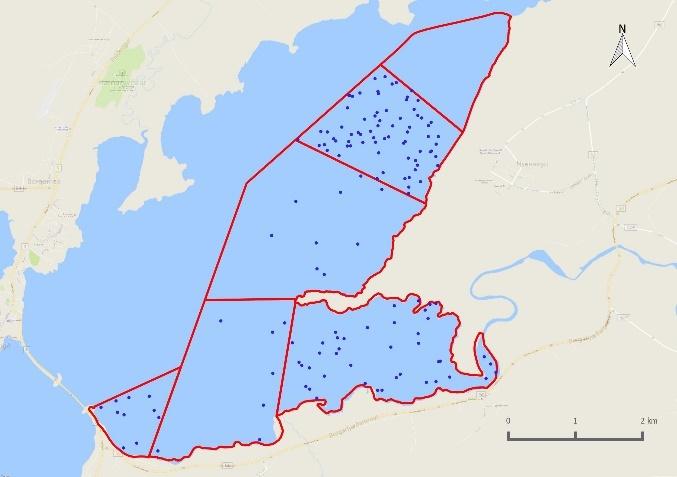
2 minute read
Dunlin
Dunlin
Calidris alpina Lóuþræll
Dunlin were first recorded on 18th April and were present in the survey area until 25th September. During April and May, and for most of June there were fewer than 200 birds recorded on each survey. However, numbers rose from the second half of June onwards. In July, counts during low tide surveys were highest, suggesting that the birds used high tide refuges outside the survey area. There were between c. 750 and 1,000 birds during low tide surveys in July. A count of 1,478 was recorded during the rising tide survey on 7th August. By the last week August, and during September, the number of birds was c. 200 or less. During August, the number of birds recorded during rising tide surveys was higher than in low tide surveys, due to the formation of a new high tide roost in Kistuhöfðahólmar (Est 3). While Dunlin were distributed throughout the six subsites, they showed a preference for Grjóteyrarklakkur (Est 1), Kistufjörđur (Est 2) and Ásgarđshöfđi (Est 4) during low tides, and Kistufjörđur (Est 2), Kistuhöfðahólmar (Est 3), Ásgarđshöfđi (Est 4) and Hvítárleirur (Est 5) during high tides. In all subsites except Kistuhöfðahólmar (Est 3), birds were most often recorded as foraging. Dunlin are common breeders within the Andakíll Ramsar site (Tierney & Tierney 2020)
Number of indivuiduals 1600 1400 1200 1000 800 600 400 200 0 Low-tide Rising-tide

10 11 12 13 14 15 16 17 18 19 20 21 22 23 24 25 26 27 28 29 30 31 32 33 34 35 36 37 38 39 40 41 42 43 Mar Apr May Jun Jul Aug Sep Oct Week number and month
Figure 3-91. Number of Calidris alpina recorded during weekly low tide and rising tide estuarine surveys in the Andakíll Ramsar site between 12th March and 25th October 2017.
Figure 3-92. Relative abundance of Calidris alpina during weekly (a) low tide and (b) rising tide estuarine surveys in the Andakíll Ramsar site between 12th March and 25th October 2017. Dots are randomly positioned within each subsite. While each dot refers to a single bird, it refers to the bird’s presence in that subsite only, and not the bird’s actual location.
(a) Low tide (b) Rising tide


(a) Spring (b) Autumn

Figure 3-93.Relative abundance during (a) spring and (b) autumn of Calidris alpina counted on twiceweekly estuarine surveys in the Andakíll Ramsar site in 2017. Spring = 12th March - 7th June; Autumn = 12
th June - 25th
October. The number of dots in each subsite refers to the total number of bird-records (from weekly low tide and rising tide surveys) in spring and autumn, adjusted for the length of the season, and reflects the species’ abundance in that season, not the specific location of birds.
Figure 3-94. Proportion of foraging and roosting Calidris alpina during weekly (a) low tide and (b) rising tide estuarine surveys in six subsites in the Andakíll Ramsar site between 12th March and 25th October 2017.

(a) Low tide (b) Rising tide












